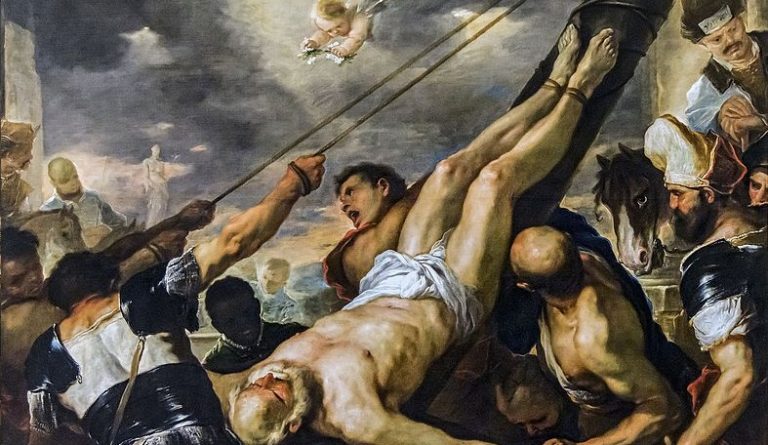By Mike Aquilina

Pilate was a waffling dupe. Judas was a tortured soul who didn’t have the courage to repent. But perhaps no villain in Christian legend comes out as completely and utterly villainous as Nero. He isn’t just a sinner who made the wrong choice: in much of Christian legend, and even theology, he is literally the Antichrist.
There were already quite a few Christians in Nero’s time. Tacitus tells us that the Jews had caused disturbances “at the instigation of Chrestus,” which almost certainly refers to the disputes between Jewish Romans and the Christians, who were indistinguishable from the Jews to the Romans’ eyes during the beginning of Christianity. “Chrestus” was a familiar Greek name, and it was how the Romans commonly heard the name “Christus” even more than a century later, as Tertullian remarks: “Which you corruptly pronounce ‘Chrestians.’”
Since Christians were mostly foreign (the Christian liturgy in Rome was in Greek for at least the first two hundred years), mostly poor, and mostly harmless, the Romans naturally hated them. It seems there was already a lot of anti-Christian feeling in Rome by Nero’s time. And if there’s one thing a populist like Nero finds extremely useful, it’s a hated minority to use as a scapegoat.
It didn’t take long for Nero to need a scapegoat. In July of 64, a fire broke out in Rome. The flames spread so rapidly that all attempts to fight them were futile. By the time it burned itself out days later, most of the best parts of the city were in ashes.
This was a calamity that needed decisive action and, to his credit, Nero reacted quickly, making sure the homeless had shelter and doing what he could to keep the city going.
But there was also a rumor that Nero himself had set the fire. It was certainly true that, almost as soon as the embers stopped glowing, Nero was at work on a vast palace complex that would replace much of what formerly had been the best part of the city. The story that he had picked up his lyre and started to sing about the fall of Troy while the city was burning seemed very much in character. People were rapidly passing from shocked to angry: they wanted someone to blame.
Well, if the people wanted somebody to blame, Nero would give them somebody to blame. Look, he pointed out: the Christians believe that the end of the world is coming, and haven’t you heard them say that the world will end by fire? And, look, the neighborhoods where most of the Christians live (the poor neighborhoods, where Nero didn’t plan on building any palaces) were spared by the fire. They probably wanted to hurry the end of the world along. Don’t you hate those Christians?
So Nero put on his biggest show yet: the Let’s-Kill-the-Christians Show.
According to ancient tradition, Peter and Paul both died during this first official Roman persecution of the Christians. Peter was crucified (upside down at his own request, because he was unworthy to die the same death as his Lord); Paul, a Roman citizen, had the privilege of being beheaded rather than crucified.
It’s easy to see how this orgy of torture would not have made Nero the Christians’ favorite among the emperors. But it was worse than just a few days of mad violence. Nero’s persecution established the principle that Christians were dangerous to society. Roman law had taken no notice of Christians as a specific group before the Great Fire. Now they would be an illegal sect, subject to the death penalty if discovered. Nero wasn’t just the first persecutor; he was the author of all future persecutions.
And that raised Nero to a higher position than anyone else in the pantheon of Christian persecutors. He wasn’t just a bad man: for many Christians, Nero was the Antichrist himself.
How late did these Nero legends survive? No one can really tell; they were legends passed down among the ordinary illiterate people. But in the year 1099, more than a thousand years after Nero died, we get a hint that they were still circulating. In that year, Pope Paschal II built was is now the Church of Santa Maria at the Piazza del Popolo in Rome. It was built on what was believed to be the site of Nero’s tomb, and the pope built it specifically to exorcise Nero’s ghost.
So Nero died at the age of thirty, but his ghost lingered in Rome for at least a thousand years.
Mike Aquilina is the author of numerous books on the early Church. His most recent work, Villains of the Early Church: And How They Made Us Better Christians, demonstrates how the Church’s persecutors and heretics gave rise to some of her greatest heroes.

